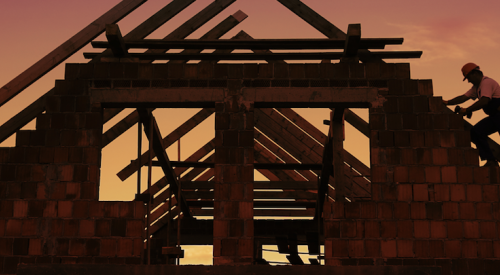How do home builders' trade partners decide where they're going to send their A-crews?
They first consider these eight essentials:
1. Scopes of work
2. Construction documents
3. Schedule reliability
4. Home readiness
5. Change orders
6. Prompt payment
7. Backcharges
8. True partnerships
The Trade Contractor/Builder Relationship
Over the years, I’ve met with hundreds of trade partner owners and material suppliers to discuss their relationships with home builders. Those meetings usually begin with lots of staring at the floor and evasive glances but invariably become very candid and impassioned conversations about the many challenges trades and suppliers face when working with builders.
I usually start with two questions: “Do you have ‘A’ crews and ‘C’ crews?” (to which the answer is always a reluctant yes), and “Do you tend to take on more work than you can reasonably handle to be sure you can keep your crews busy?” (again, a reluctant yes).
This reality in our industry begs the question: How do trade partners decide where to send their A-crews? The simple answer is, “To the builders that make me profitable.” But the underlying factors that determine which builders get the best crews on Monday morning (instead of the C-crews on Thursday) are more complicated. Win at that, and the ongoing shortage of skilled construction labor becomes another builder’s problem.
8 Key Factors Trade Contractors Consider When Making Deployment Decisions for Builder Partners
Here’s my list of eight factors that determine how trade partners make their deployment decisions—usually early on Monday morning when they’re setting schedules for the week.
1. Scopes of Work—What Are Trades Being Paid to Do?
Agreeing on precise scopes of work is an important starting point to ensure that trade partners and suppliers know what they’re being paid to do.
Most builders define the scope of work in their contracts with suppliers and trades. When contracts are sufficiently detailed and explicit, few questions arise about what obligations are required of the providers; when they are not, or when they aren’t reviewed carefully at the time of contract, disagreements often arise that invariably cost the provider money.
2. Construction Documents—Are They Clear and Comprehensive?
When your construction documents are comprehensive, clear, and consistent, trade partners and suppliers can fully understand the construction details needed to build your homes properly. This level of detail includes all structural options and decorator selections, ensuring that the homes are built to customers’ specifications.
When construction documents and their details vary, or they don’t include complete specifications, errors inevitably occur and trade partners and suppliers are commonly held accountable for making corrections—often at great expense.
Lot-specific documents go a long way toward addressing this problem, but many trades tell me that quality and completeness of construction documents are commonly lacking, forcing them to “guess” at what they are supposed to build.
3. Schedule Reliability—Is the Schedule Accurate?
So-called “dry runs,” when a trade partner sends a crew to a jobsite that isn't ready for their work (despite schedules that say otherwise), are among the most expensive costs borne by trades. That crew still needs to get paid, and the scheduler is forced to scramble to find another jobsite—a cost builders usually don’t pay for.
To mitigate this issue, many trades invest in supervisors who visit jobsites to confirm a home’s readiness before crews are deployed—a preventive measure, albeit still an additional cost to the provider.
Dry runs can only be solved by providing reliable and accurate schedules. The best builders ensure that homes are always ready for the next trade, eliminating dry runs and making their trade partners more profitable.
4. Home Readiness—Is the Jobsite Really Ready for the Trade to Work?
Related to schedule reliability, home readiness means “100% ready” to a trade partner. But some builders will schedule trades to work when not all of the materials are on hand to complete the job or other trades are still working. The trade must then schedule return trips to complete that work.
For your trades, this is an expensive extra step (or two or three) that complicates their scheduling and results in additional costs (for travel, etc.), which often go uncompensated and erode the trade’s profitability.
Further, home readiness also means clean and safe homes in which to work. Trades report that a broom-clean home allows them to work more efficiently and quickly in safe conditions. Stepping over another trade’s trash or working around them is more time-consuming and expensive.
The best builders ensure that homes are 100% ready, meaning the homes are clean and safe (and empty), with all materials on hand.
5. Change Orders—Is the Home Builder Doing Everything Possible to Limit Late Changes?
One builder client of mine complained about how long it was taking to build his homes and about how many times change-order work was missed or improperly installed.
When research revealed that his homes averaged nearly 20 late change orders, the cause was clear: Allowing customers to make changes after homes have been released to construction is a surefire formula for error, rework, and delay.
And the cost of those errors is often absorbed by trade partners who are told to “fix the mistake,” which was very often caused by a late change order that wasn’t communicated to them in a timely manner to enable a proper adjustment.
Builders that impose and enforce a strict moratorium on late change orders by their homebuyers solve this problem without compromising customer satisfaction. In fact, it’s been proven that avoiding errors and delays due to late changes improves customer satisfaction.
6. Prompt Payment—Does the Builder Pay in a Timely Manner?
Too many builders fail to recognize that most of their trade partners live paycheck to paycheck and depend on timely payment for their work to pay employees and bills.
Auto-pay is the best solution, but all builders need to recognize that those who pay promptly are usually the first to be scheduled by a trade partner. Builders that withhold or delay payment are scheduled last. It’s that simple.
7. Backcharges—Does the Builder Work With Trades to Prevent Errors?
Too many builders use the imposition of backcharges to enforce performance or compliance among their trades and suppliers. While trades do make mistakes and should be reasonably held accountable when those mistakes are proven to be their fault, too often backcharges are applied without proper notice and without clear accountability.
Many trades admit that they compensate for builders with a penchant for backcharging with higher pricing—a perfect lose-lose scenario.
The best builders avoid backcharges and instead work with their trade partners and suppliers to prevent future errors.
8. True Partnerships—Does the Builder Consider the Trade a Valuable Collaborator in Building a Quality Product?
Most important of all, trades and suppliers want to do business with builders that consider them partners, working together to build homes of high quality.
When more than 20 trade representatives gave one builder relatively low scores in many of the categories outlined above, yet still rated that company as their No. 1 “builder of choice,” the explanation was, “They don’t do everything right, but they work with us professionally and respectfully to make improvements together. There is no ‘blame game.’ We work together to make things better.”
In the end, working with your suppliers and trades to improve construction processes earns you the right to get their A-crew on Monday, while the C-crew is sent to your competitors on Thursday.













